Winners of the IAG Young Scientist Award for 2020
We are proud to announce that the winners of the 2020 IAG Young Scientist Award are Jie Lin (Wuhan) and Michael Weber (Mainz). They will be presenting their research at the 2020 Goldschmidt conference in Hawaii, 21-26 June. During the conference they will also be receiving their IAG awards. For more information see https://goldschmidt.info/2020/medalsView
 Jie Lin is a post-doctoral scientist at the China University of Geosciences (Wuhan), where she majored in isotope analysis. The main focus of her research has been the development of new strategies and methods for Li isotope ratio measurements. Firstly, she provided a method to reduce the memory effect of Li during analysis. Her methodology has been applied in many international laboratories and publicised by Thermo Fisher Scientific. Secondly, she investigated the factors affecting the in situ determination of Li isotopes and developed a procedure for Li isotopic analysis by laser ablation multi-collector mass spectrometry (LA-MC-ICP-MS). Thirdly, she has worked on measuring Li isotopic ratios in carbonate samples and provided accurate and precise δ7Li values for various carbonate reference materials. She has also evaluated the feasibility of Li isotopic analysis in tourmalines by LA-MC-ICP-MS using matrix-matched and non-matrix-matched calibration. Currently, she is researching methods for determining Mg and O isotope ratios by LA-MC-ICP-MS.
Jie Lin is a post-doctoral scientist at the China University of Geosciences (Wuhan), where she majored in isotope analysis. The main focus of her research has been the development of new strategies and methods for Li isotope ratio measurements. Firstly, she provided a method to reduce the memory effect of Li during analysis. Her methodology has been applied in many international laboratories and publicised by Thermo Fisher Scientific. Secondly, she investigated the factors affecting the in situ determination of Li isotopes and developed a procedure for Li isotopic analysis by laser ablation multi-collector mass spectrometry (LA-MC-ICP-MS). Thirdly, she has worked on measuring Li isotopic ratios in carbonate samples and provided accurate and precise δ7Li values for various carbonate reference materials. She has also evaluated the feasibility of Li isotopic analysis in tourmalines by LA-MC-ICP-MS using matrix-matched and non-matrix-matched calibration. Currently, she is researching methods for determining Mg and O isotope ratios by LA-MC-ICP-MS.
When Jie is not working in the laboratory, she enjoys playing badminton, cycling and walking on the East Lake Greenway in Wuhan with her baby.
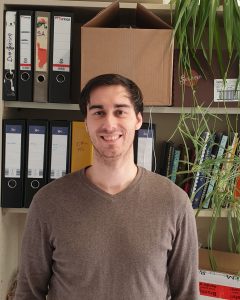 Michael Weber is a post-doctoral researcher at the Johannes Gutenberg University, Mainz, Germany, in the working group of Applied and Analytical Palaeontology. He is currently investigating the fractionation of stable Sr and Ca isotopes along trophic levels in vertebrates using MC-ICP-MS techniques.
Michael Weber is a post-doctoral researcher at the Johannes Gutenberg University, Mainz, Germany, in the working group of Applied and Analytical Palaeontology. He is currently investigating the fractionation of stable Sr and Ca isotopes along trophic levels in vertebrates using MC-ICP-MS techniques.
Michael first came in contact with isotope geochemistry during his work as a student assistant, where he applied 230Th/U dating to speleothem samples and performed the chemical separation as well as the mass spectrometric analyses. During his PhD, he started to work intensively on the application of Sr isotope ratios to different kind of geological materials and reference materials, especially in situ analysis using LA-MC-ICP-MS. This finally led to a publication on the development of NanoSr, a new synthetic carbonate reference material, especially designed for carbonate samples with low Sr contents. As well as the geoanalytical work, he is also involved in the reconstruction of past climate variability using speleothem, by applying a wide range of techniques and isotope systems, such as 230Th/U dating, stable carbon and oxygen isotopes, in addition to Sr isotopes. He is currently working with a Neptune Plus at the Institute of Geosciences, performing Sr and Ca isotope determinations of different kinds of biological hard and soft tissues.
When Michael is not working in the lab, he enjoys cycling, playing football and spending time with his wife and their pets.
Winner of 2019 IAG Young Scientist Award
Martijn Klaver
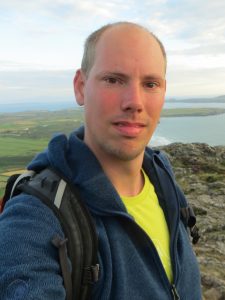 When Martijn received his award he was a senior research associate in isotope cosmochemistry at the University of Bristol where he studied planetary differentiation using a range of mass-dependent isotope systems. Martijn is currently working in the School of Earth and Ocean Sciences at Cardiff University, UK.
When Martijn received his award he was a senior research associate in isotope cosmochemistry at the University of Bristol where he studied planetary differentiation using a range of mass-dependent isotope systems. Martijn is currently working in the School of Earth and Ocean Sciences at Cardiff University, UK.
Martijn got hooked on isotope geochemistry during his geology degree at the Vrije Universiteit Amsterdam. He was responsible for running the TIMS lab as a student-assistant and quickly took on developing mass spectrometry routines and calibrating spikes for isotope dilution measurements. Development of analytical techniques remained prominent during his PhD at the same institute as he moved onto the realm of double spiking with Pb. Taking advantage of the availability of then prototype 1013 Ω resistors, he developed a technique for the high-precision measurement of ng-size Pb samples.
Martijn joined the Bristol Isotope Group in 2016 after finishing his PhD. He has developed and deployed novel methods in measuring mass-dependent isotope systems to study the differentiation of the Earth. With an optimised Ni double spike method, he has showed that Earth’s mantle is noticeably fractionated relative to chondritic meteorites, potentially reflecting a core formation signature. He has further embraced the possibilities of critical mixture double spiking for studying both Si and Mg isotopic variability at high precision and employed the capabilities of Proteus, a prototype collision cell multi-collector mass-spectrometer, to examine the Ca isotopic systematics of the Moon. When not indulging in this rich isotopic smorgasbord, Martijn enjoys hiking and playing korfball.
Winner of 2018 IAG Young Scientist Award
Alicia Cruz-Uribe
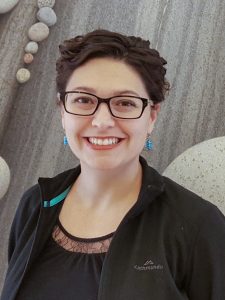
Alicia is the Edward Sturgis Grew Assistant Professor of Petrology and Mineralogy at the University of Maine. One of the primary focuses of her research is the geochemical connection between the metamorphism that occurs in subducted oceanic crust and the geochemistry of arc volcanoes, i.e. understanding the geochemical fingerprint of subduction. She is particularly interested in single element thermometry and quantifying the spatial and temporal scales of equilibrium in metamorphic rocks.
Alicia has developed a new technique for analyzing Ti in quartz by laser ablation ICP-MS, and has published papers using a wide variety of analytical techniques. Her recent work includes combining LA-ICP-MS analyses of trace elements with SIMS analyses of sulphur and oxygen isotopes in silicates and sulfides. In doing so, she hopes to constrain the composition and evolution of fluids produced during devolatilisation of subducting slabs. She is the head of the new MicroAnalytical Geochemistry and Isotope Centre (MAGIC Lab) at the University of Maine, which houses an Agilent 8900 triple quadrupole mass spectrometer and NWR193 laser ablation system.
When she is not in the lab, Alicia enjoys nordic skiing, cycling, and going out in the field to collect rocks with her colleagues, students and baby girl.
Cruz-Uribe, A.M., Feineman, M.D., Zack, T., Jacob, D., in press, Invited Review Article: Assessing trace element (dis)equilibrium and the application of single element thermometers in metamorphic rocks: Lithos.
Cruz-Uribe, A. M., Mertz-Kraus, R., Zack, T., Feineman, M. D., Woods, G., & Jacob, D. E. (2016). A New LA-ICP-MS Method for Ti in Quartz: Implications and Application to High Pressure Rutile-Quartz Veins from the Czech Erzgebirge. Geostandards and Geoanalytical Research, 1–12. http://doi.org/10.1111/ggr.12132
Cruz-Uribe, A. M., Hoisch, T. D., Wells, M. L., Vervoort, J. D., & Mazdab, F. K. (2015). Linking thermodynamic modelling, Lu-Hf geochronology and trace elements in garnet: new P-T-t paths from the Sevier hinterland. Journal of Metamorphic Geology, 33(7), 763–781. http://doi.org/10.1111/jmg.12151
Cruz-Uribe, A. M., Feineman, M. D., Zack, T., & Barth, M. (2014). Metamorphic reaction rates at ~650-800 °C from diffusion of niobium in rutile. Geochimica et Cosmochimica Acta, 130, 63–77. http://doi.org/10.1016/j.gca.2013.12.015
Winners of 2017 IAG Young Scientist Award
Both winners presented their work at the 2017 Goldschmidt conference in Paris. For more details, see https://goldschmidt.info/2017/medalsView
Dorothea Macholdt
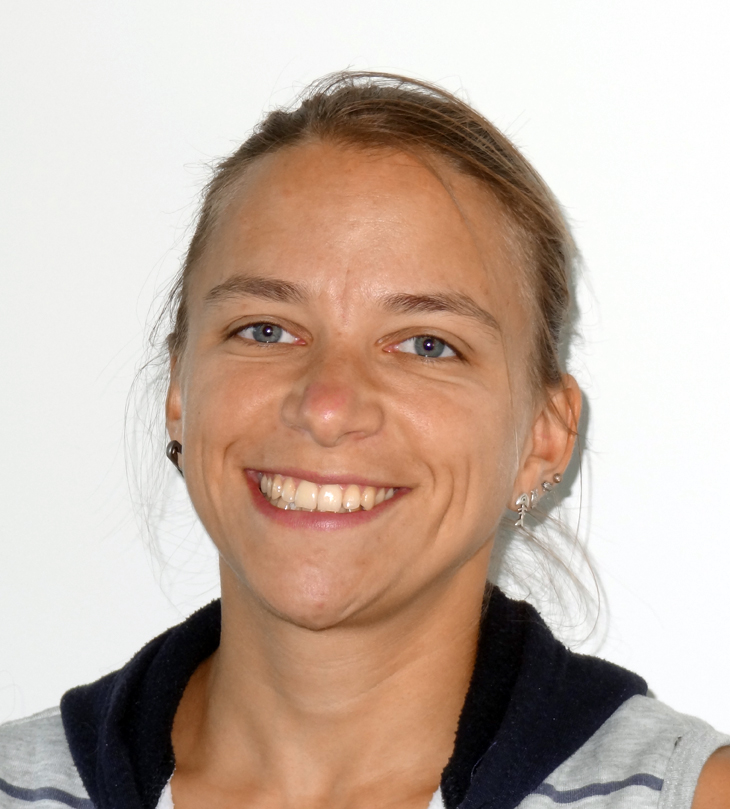 Dorothea successfully completed her PhD studies at the Max-Planck Institute for Chemistry in Mainz, Germany in May 2017. Her thesis “Interdisciplinary Research on Rock Varnish” combined chemical, biological, geochemical, mineralogical and atmospheric data.
Dorothea successfully completed her PhD studies at the Max-Planck Institute for Chemistry in Mainz, Germany in May 2017. Her thesis “Interdisciplinary Research on Rock Varnish” combined chemical, biological, geochemical, mineralogical and atmospheric data.
During her research she was involved in developing new techniques for the analysis of atmospheric dust samples and rock varnish, characterising reference materials and conducting portable XRF measurements at sites of historical interest. She has already made substantial contributions to ongoing scientific investigations and is first author of four publications in international journals (see below).
When she is not working hard at her studies, Dorothea enjoys the outdoor life either hiking or cycling.
Macholdt, D.S., Jochum, K.P., Stoll, B., Weis, U. and Andreae, M.O. (2014). A new technique to determine element amounts down to femtograms in dust using femtosecond laser ablation-inductively coupled plasma-mass spectrometry. Chemical Geology, 383, 123-131.
Macholdt, D., Jochum, K., Pöhlker, C., Stoll, B., Weis, U., Weber, B., Müller, M., Kappl, M., Buhre, S., Kilcoyne, A., Weigand, M., Scholz, D., Al-Amri, A.M., Andreae, M.O. (2015). Microanalytical methods for in-situ high-resolution analysis of rock varnish at the micrometer to nanometer scale. Chemical Geology, 411, 57-68.
Macholdt, D.S., Jochum, K.P., Wilson, S.A., Otter, L.M., Stoll, B., Weis, U. and Andreae, M.O. (2016). Suitability of Mn‐and Fe‐Rich Reference Materials for Microanalytical Research. Geostandards and Geoanalytical Research, 40, 493-504.
Macholdt, D.S., Jochum, K.P., Pöhlker, C., Arangio, A., Förster, J.D., Stoll, B., Weis, U., Weber, B., Müller, M., Kappl, M., Shiraiwa, M., Kilcoyne, A.L.D., Weigand, M., Scholz, D., Haug, G., and Andreae, M.O. (2017) Characterization and differentiation of rock varnish types from different environments by microanalytical techniques. Chemical Geology, 459, 91-118.
Peter Onuk
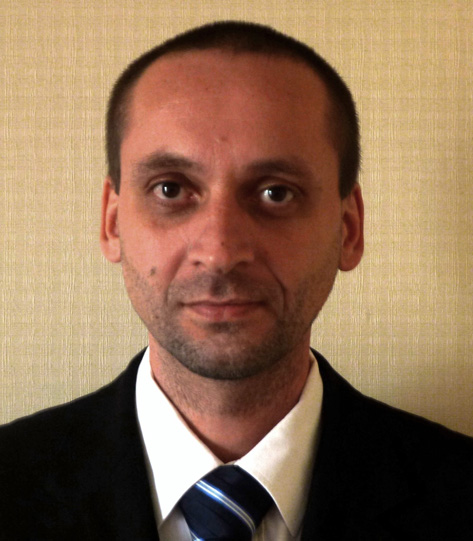 Peter has been a PhD student at the Department of Geology and Economic Geology, Montanuniversität, Leoben, Austria since 2014.
Peter has been a PhD student at the Department of Geology and Economic Geology, Montanuniversität, Leoben, Austria since 2014.
The subject of his thesis is the potential exploitation of high-technology elements in sphalerite from Eastern Alpine Pb-Zn ore deposits. His research has involved the analysis of sphalerite (ZnS) using LA-ICP-MS, which necessitated the development of suitable reference materials for calibration of the LA-ICP-MS system. Peter devised a sintering technique to produce homogenous ZnS materials doped with a wide range of trace elements, which was published in Geostandards and Geoanalytical Research in 20161.
In addition, he developed a cost-efficient method for sulphur isotope measurements by LA-ICP-MS, using N2O as the reaction gas in an ICP-MS/MS system (paper in preparation). The reference materials he developed, MUL-ZnS1 and MUL-ZnS2, have been distributed to many other laboratories, as the demand for such materials in research related to ore geology continues to grow. When he is not in the lab, Peter enjoys cave diving and renovating a 300 year old mill.
1Onuk, P., Melcher F., Mertz-Kraus, R., Gäbler, H-E. and Goldmann, S. (2016). Development of a matrix-matched sphalerite reference material (MUL-ZnS-1) for calibration of in situ trace element measurements by laser ablation-inductively coupled plasma mass spectrometry. Geostandards and Geoanalytical Research 41(2), 263-272.
